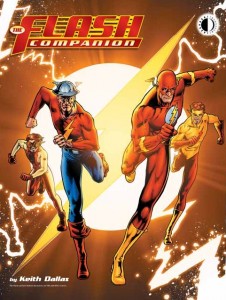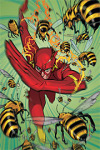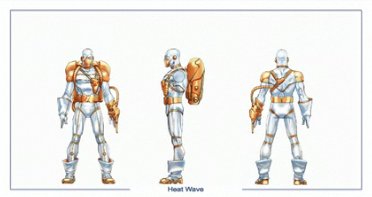In just three weeks, The Flash Companion will hit the shelves — just in time for San Diego Comic-Con. Written by Keith Dallas and published by TwoMorrows, the book covers the entire history of the Flash from 1940 to the present.

I’ll let the official summary speak for itself (with a bit of reformatting):
The Flash Companion details the publication histories of the four heroes who have individually earned the right to be declared DC Comics’ “Fastest Man Alive”: Jay Garrick, Barry Allen, Wally West, and Bart Allen.
With articles about legendary creators Shelly Mayer, Gardner Fox, E.E. Hibbard, Julius Schwartz, Robert Kanigher, John Broome, Ross Andru, Irv Novick and all new interviews of Harry Lampert, Carmine Infantino, Cary Bates, Alex Saviuk, Mike W. Barr, Marv Wolfman, Mike Baron, Jackson Guice, Mark Waid, Kolins, among others, The Flash Companion recounts the scarlet speedster’s evolution from the Golden Age to the 21st century.
Also featured are “lost covers,” never before published commission pieces by Flash artists throughout the decades, a Rogues Gallery detailing The Flash’s most famous foes, a tribute to late artist Mike Wieringo by Mark Waid, a look at the speedster’s 1990s TV show, and “Flash facts” detailing pivotal moments in Flash history.
Written by Keith Dallas, with a cover by Don Kramer (Detective Comics, JSA) with colors by Moose Baumann (Green Lantern).
Dallas recruited a number of fans from the Comic Bloc Forums to help write articles, conduct interviews, and contribute artwork and photos. I contributed three articles to the Rogue Profiles section: Abra Kadabra, the Reverse-Flash, and Zoom.
I’ve had a chance to read some of the other articles and interviews, and I’m really excited about this book. It’s going to be a fascinating read and a great resource for Flash fans.
Over the next few weeks, with the author’s permission, I’ll be posting an excerpt each week up until the release date.
One more item: This is small press, and I’m not the main author on the book, so I’m not getting paid for the articles I contributed (unless you count the comp copy). But I do have an Amazon Affiliate account, so if you order through this link, I’ll actually get paid a little in a roundabout way.
 CBR recently interviewed Alan Burnett, the incoming Flash writer. He didn’t give much away about his arc, “This Was Your Life, Wally West,” except to note that his run on the book only lasts four issues.
CBR recently interviewed Alan Burnett, the incoming Flash writer. He didn’t give much away about his arc, “This Was Your Life, Wally West,” except to note that his run on the book only lasts four issues.

